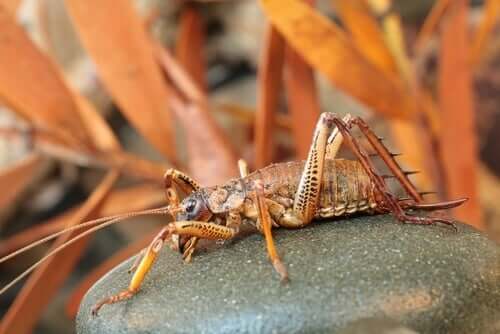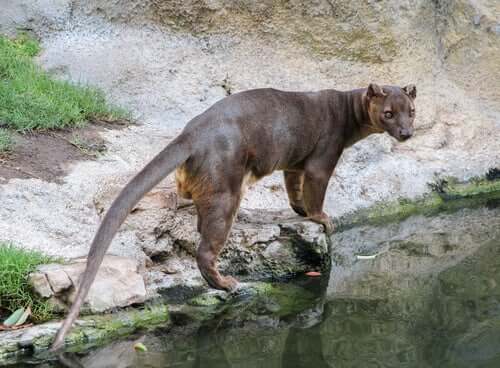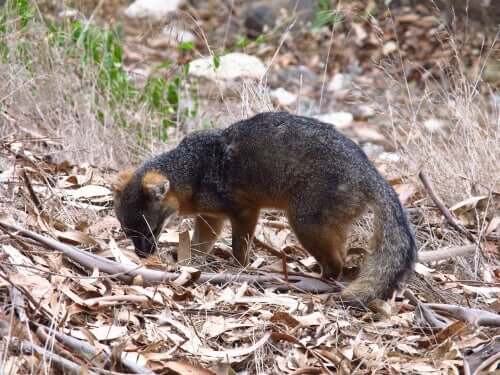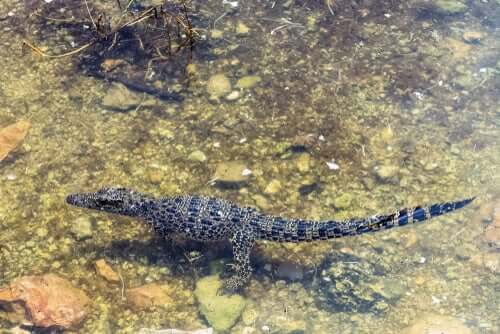Island Gigantism and Dwarfism: What Are They?

The conditions known as island gigantism and island dwarfism show up in species native to islands all over the world. We’re going to tell you all you need to know about these two phenomena in this article.
What are island gigantism and dwarfism?
Before we get into specifics, we should start by defining what exactly island gigantism and dwarfism are. Both conditions are an evolutionary response by animals (and some plants) that live on islands far from large land masses. Island gigantism causes a species to grow much larger than its ancestors.
There are three main causes:
1. An absence of predators
A small animal is more likely to be eaten by a bigger one. At the same time, it also has an easier time hiding. But, if an animal on an island has no predators, there won’t be any issue with it growing bigger and bigger.
2. An absence of competitors
One of the other potential causes of island gigantism is that a particular species doesn’t have any competitors fighting over the same resources. That basically means they have it all to themselves and can eat more, and better, and grow as a result.
3. The presence of large prey
When the prey is too big, an animal species will have to adapt. One of the ways to do that is by growing.
Island dwarfism is basically the opposite version of this, and is more common than you might think. Being isolated in a small habitat like an island also leads some animals to shrink to adapt to a lack of resources.
Examples of island gigantism
Rodents and birds are clear examples of island gigantism, but they’re not the only ones. Although most species that evolved into a size much larger than normal have gone extinct, there are still some out there. Here are a few:
1. The Galapagos tortoise
There are actually 10 different species within the “Galapagos tortoise” label (like the ones in the picture at the top), and they’re all related. They live on this archipelago in the Pacific Ocean (part of Ecuador), and are the biggest in the world.
This group (Chelonoidis nigra) has tortoises that can measure over 6 feet long and weigh nearly half a ton. Even more astonishing than that, they can make it to 170 years old!
2. Weta
These are some of the biggest and heaviest insects in the world, from New Zealand. The giant weta can measure nearly 4 inches and weigh 1 ounce. The males are bigger than the females, and are also much more aggressive.

They hide in holes and trees during the day. Once it’s nighttime, they come out to hunt. They have extremely powerful jaws and can easily eat beetles and moths.
3. Fossa
This is a carnivorous mammal native to the island of Madagascar. It’s also the only natural predator in its environment. The modern-day fossa is twice as long and twice as heavy as its ancestors.

Nowadays fossa males can be up to 31 inches long (with a tail almost as long as that), and weigh up to 19 pounds.
Examples of island dwarfism
The process of island dwarfism is most common in mammals, although there are some cases with reptiles. Here are a couple examples of it:
1. Island fox
This is a small canine native to the islands near Santa Barbara, on the coast of California. It’s sadly also in danger of extinction. This is the smallest breed of fox in North America, with a body about the same size as a house cat. They’re usually around 20 inches long (with an 8-inch tail) and weigh around 4 pounds.

2. Cuban crocodile
This is the smallest species of crocodiles in the world (never more than 11 feet long). As their name suggests, they’re from the island of Cuba (and have a very limited habitat). They eat birds, fish, and mammals. Despite their small size, they’re still extremely dangerous.

Island gigantism and dwarfism are an evolutionary response to a habitat. But, in many cases, and thanks to external factors like human impact, animals that undergo this change end up going extinct.
The conditions known as island gigantism and island dwarfism show up in species native to islands all over the world. We’re going to tell you all you need to know about these two phenomena in this article.
What are island gigantism and dwarfism?
Before we get into specifics, we should start by defining what exactly island gigantism and dwarfism are. Both conditions are an evolutionary response by animals (and some plants) that live on islands far from large land masses. Island gigantism causes a species to grow much larger than its ancestors.
There are three main causes:
1. An absence of predators
A small animal is more likely to be eaten by a bigger one. At the same time, it also has an easier time hiding. But, if an animal on an island has no predators, there won’t be any issue with it growing bigger and bigger.
2. An absence of competitors
One of the other potential causes of island gigantism is that a particular species doesn’t have any competitors fighting over the same resources. That basically means they have it all to themselves and can eat more, and better, and grow as a result.
3. The presence of large prey
When the prey is too big, an animal species will have to adapt. One of the ways to do that is by growing.
Island dwarfism is basically the opposite version of this, and is more common than you might think. Being isolated in a small habitat like an island also leads some animals to shrink to adapt to a lack of resources.
Examples of island gigantism
Rodents and birds are clear examples of island gigantism, but they’re not the only ones. Although most species that evolved into a size much larger than normal have gone extinct, there are still some out there. Here are a few:
1. The Galapagos tortoise
There are actually 10 different species within the “Galapagos tortoise” label (like the ones in the picture at the top), and they’re all related. They live on this archipelago in the Pacific Ocean (part of Ecuador), and are the biggest in the world.
This group (Chelonoidis nigra) has tortoises that can measure over 6 feet long and weigh nearly half a ton. Even more astonishing than that, they can make it to 170 years old!
2. Weta
These are some of the biggest and heaviest insects in the world, from New Zealand. The giant weta can measure nearly 4 inches and weigh 1 ounce. The males are bigger than the females, and are also much more aggressive.

They hide in holes and trees during the day. Once it’s nighttime, they come out to hunt. They have extremely powerful jaws and can easily eat beetles and moths.
3. Fossa
This is a carnivorous mammal native to the island of Madagascar. It’s also the only natural predator in its environment. The modern-day fossa is twice as long and twice as heavy as its ancestors.

Nowadays fossa males can be up to 31 inches long (with a tail almost as long as that), and weigh up to 19 pounds.
Examples of island dwarfism
The process of island dwarfism is most common in mammals, although there are some cases with reptiles. Here are a couple examples of it:
1. Island fox
This is a small canine native to the islands near Santa Barbara, on the coast of California. It’s sadly also in danger of extinction. This is the smallest breed of fox in North America, with a body about the same size as a house cat. They’re usually around 20 inches long (with an 8-inch tail) and weigh around 4 pounds.

2. Cuban crocodile
This is the smallest species of crocodiles in the world (never more than 11 feet long). As their name suggests, they’re from the island of Cuba (and have a very limited habitat). They eat birds, fish, and mammals. Despite their small size, they’re still extremely dangerous.

Island gigantism and dwarfism are an evolutionary response to a habitat. But, in many cases, and thanks to external factors like human impact, animals that undergo this change end up going extinct.
All cited sources were thoroughly reviewed by our team to ensure their quality, reliability, currency, and validity. The bibliography of this article was considered reliable and of academic or scientific accuracy.
- Lomolino, M. V. (2005). Body size evolution in insular vertebrates: Generality of the island rule. Journal of Biogeography. https://doi.org/10.1111/j.1365-2699.2005.01314.x
This text is provided for informational purposes only and does not replace consultation with a professional. If in doubt, consult your specialist.








